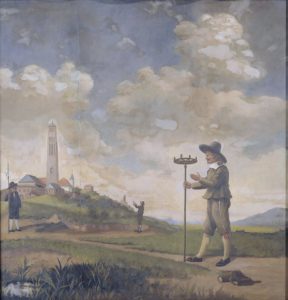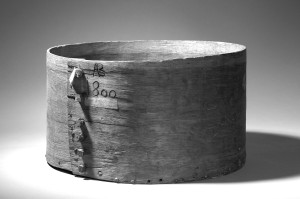In the Netherlands, the metric system was introduced in 1816. Before that time, different areas used different weights and measures. Not only did they use different terms, but the amount indicated by the term could differ from one place to the next. The Meertens Instituut website has an overview of all the different measures in the country, organized by town, province, or type of measure/weight. If you come across a weight or measure in a record, you can use this website to figure out how … [Read more...]
Dutch term – Duim, voet, roede
These are three measures of length that were in use until the implementation of the metric system during the French occupation (1795-1813). Duim (thumb): about 2.5 cm/1" Voet (foot): about 30 cm, about 11.8" Roede (rod): around 3.6-4 meters (11'10"-13'1.5"). The exact size depended on the time and place. In general there were 12 duimen in a voet and 12 voeten in a roede, but a roede could have as many as 20 voeten. … [Read more...]
Dutch terms – Bunder, Roede, El
Bunder, roede, and el were measures of land. You can find them in cadastral records and other land records. These terms have been used for centuries, and reflected different sizes in different areas. A bunder was typically 400 or 450 roede. An el was around 68-70 cm (distance from elbow to end of finger) and an el used for a surface area was a square with the sides of an el. In 1816, the metric system was introduced and these terms were given metric measures: Bunder: 10,000 m2 (100 x 100 … [Read more...]
Dutch term – Schepel
A schepel is a measure of surface as well as of capacity. One schepel of land used to be the amount of land you could sow with one schepel of grain. You may encounter the term in land records or tax records. The size of a schepel differed from one region to the next. For example, in Gelderland, a schepel of land was about 1450 m2, or 0.36 acres. In Twente, a schepel was about 887 m2 or 0.22 acres.1 Source "Schepel (oppervlaktemaat)," Wikipedia, … [Read more...]




